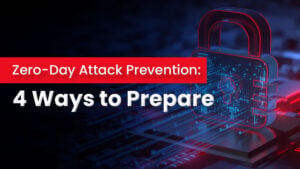
How to Apply Cybersecurity in Fintech for User Protection
Introduction As fintech evolves, it brings innovative financial solutions that enhance user convenience, such as mobile banking, digital lending, and secure payments. However, as financial
Exclusive Discount Offer: Unlock 3-Months of IPSpecialist’s Premium Plan for Just $59.99 $15.99! Save $44 Today! Subscribe Now!

Introduction As fintech evolves, it brings innovative financial solutions that enhance user convenience, such as mobile banking, digital lending, and secure payments. However, as financial

Introduction In the realm of cloud computing, Amazon Web Services (AWS) offers a variety of managed database options that help organizations scale, secure, and optimize

Introduction In the ever-evolving landscape of cybersecurity, zero-day attacks pose a significant threat to businesses and individuals alike. A zero-day attack exploits a software vulnerability
Table of Contents
Ansible is a powerful open-source automation tool that can be used to automate a wide range of security tasks, including vulnerability management, configuration management, compliance monitoring, and incident response. It is agentless, meaning that it does not require any software to be installed on the systems that it manages, and it has a large and active community.
Ansible can be used to improve the security posture of an organization by enforcing security policies consistently across all systems, reducing the risk of human error, improving the visibility of security events, and accelerating the response to security incidents.
This article covers detailed knowledge of Ansible security best practices.
Check Out Our Ansible Course Now!
Ansible is a powerful automation tool that can be used to automate a wide range of security tasks, including:
Implementing Ansible security best practices provides several key benefits for organizations using Ansible for automation and configuration management:
Ansible security best practices will continue to evolve in response to emerging technologies, threat landscapes, and changing organizational needs. Here are some insights into the potential directions for Ansible security best practices in the future:
By adhering to these Ansible security best practices, you can mitigate risks, enhance the security of your automation infrastructure, and maintain a more robust and reliable environment for your organization’s operations. Security is an ongoing process; regular assessment and adaptation are crucial to protecting against emerging threats.
© 2024 All rights reserved | Privacy Policy | Terms and Conditions | Sitemap | Cookie Policy




